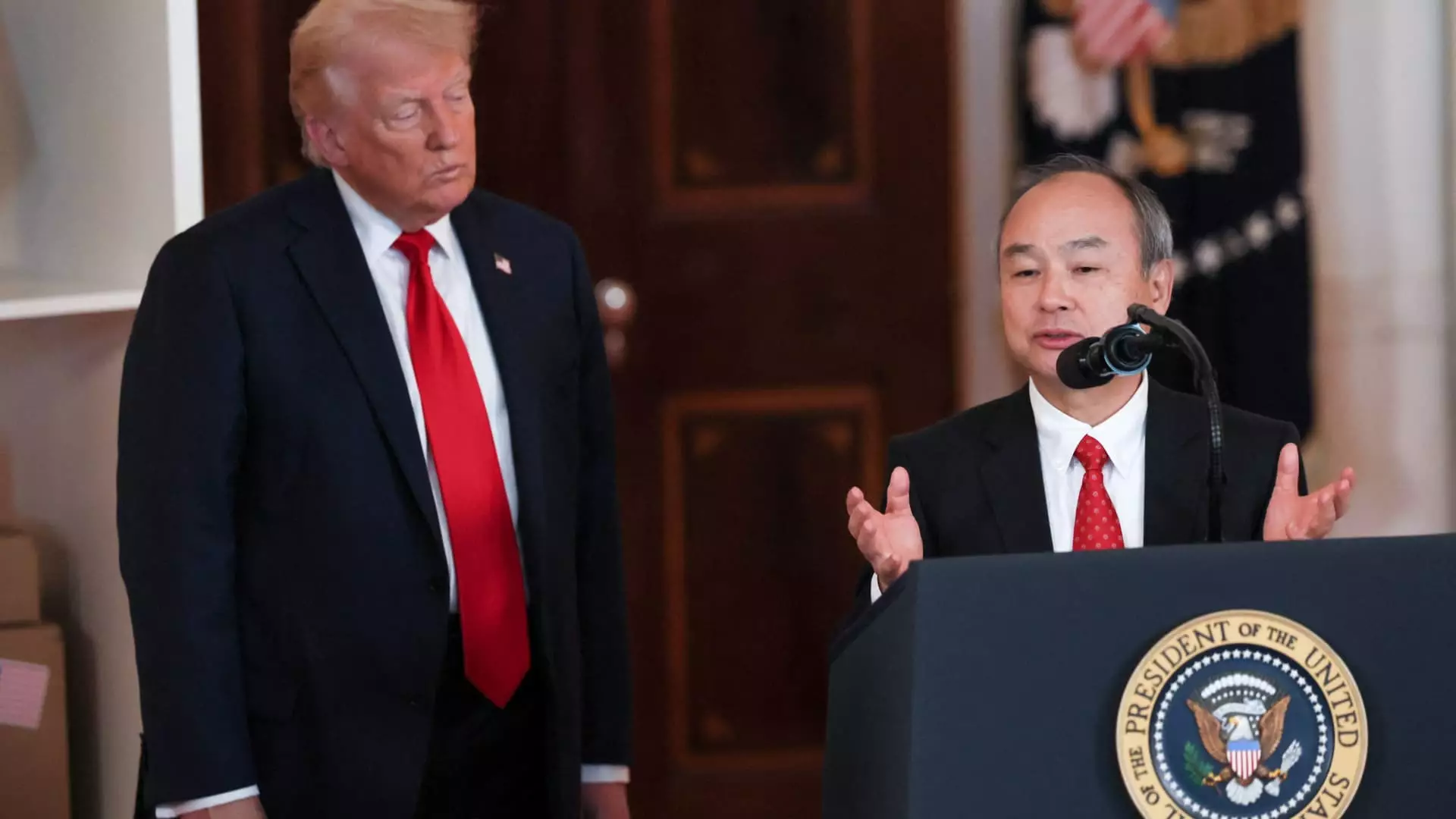SoftBank’s Vision Fund, once hailed as the crown jewel of the investment world, has recently revealed disheartening numbers that give pause to its fervent supporters. The fiscal year ending in March laid bare an alarming reality: the fund reported only a ¥434.9 billion ($3.3 billion) gain, marking a staggering 40% decrease from the previous year. This downward spiral can be traced back to a multitude of factors, signaling a troubling trend within the once-mighty venture capital structure. The promise of exponential growth in technology investments now seems overshadowed by an unpredictable and volatile market, casting doubt over SoftBank’s strategic decisions.
Disappointment in Dissonance
The Vision Fund’s fourth quarter gain of ¥26.1 billion was a rare glimmer of hope, largely bolstered by the impressive performance of TikTok’s parent company, ByteDance. Yet, this momentary upswing does little to distract from the stark reality of an overall pretax loss of ¥115.02 billion ($777.7 million). Compounding this issue, losses from previously lucrative investments, such as AutoStore, weigh heavily on SoftBank’s financial balance, demonstrating how fragile the landscape can be for startups and mature companies alike. The consistency of returns has fallen into disarray, as seen in the disheartening 17% drop in SoftBank’s stock price this year. It raises vital questions about the sustainability of SoftBank’s vision and whether it can weather economic instability.
Bettors or Dreamers? The AI Gamble
At the helm of this tempestuous ship is Masayoshi Son, whose fervent quest to position SoftBank at the forefront of artificial intelligence does not come without substantial risk. Amidst the challenges within the Vision Fund, SoftBank has shifted its focus to the burgeoning AI sector with a bold investment strategy. The $30 billion investment in OpenAI exemplifies Son’s relentless push for dominance in what he envisions as a pivotal future market. This may very well be the vision that eventually transforms SoftBank into a tech powerhouse, or it might become an anchor that drags the company further down if these speculative ventures collapse under their own weight.
Investor Strain and Future Prospects
SoftBank’s efforts to become a leader in AI through initiatives like the Stargate project are commendable but fraught with uncertainties. There are alarming signs that suggest potential financiers are pausing to reconsider their commitments amidst growing economic volatility. SoftBank’s CFO, Yoshimitsu Goto, has publicly refuted claims that banks are retracting their support. Yet these reassurances feel hollow in light of the deep-rooted inconsistencies displayed by the Vision Fund. As various proposals for the construction of data centers begin to trickle in, it remains to be seen whether these plans will materialize into actual support or if they will languish like many of SoftBank’s prior initiatives.
The Price of Ambition
While SoftBank has ultimately recorded its first annual profit in four years of ¥1.15 trillion, much of this success was derived from legacy investments in companies like Alibaba and T-Mobile, rather than substantial returns from the Vision Fund. This disassociation between the Vision Fund’s losses and other profitable sectors of the company raises vital questions about resource allocation and long-term sustainability. What once represented a groundbreaking approach to venture capital now seems to reflect a heavy overextension, leading to an imbalance that may prove untenable in a rapidly shifting economic landscape.
It’s crucial to acknowledge the implications of this financial turbulence not only for SoftBank but also for the broader investment community. A failure by SoftBank to regain stability could trigger a ripple effect, prompting investors to reassess their own faith in ambitious tech ventures. The delicate dance between innovation and fiscal responsibility is at the forefront of this narrative, reminding us all how quickly fortunes can change in the tech industry.

